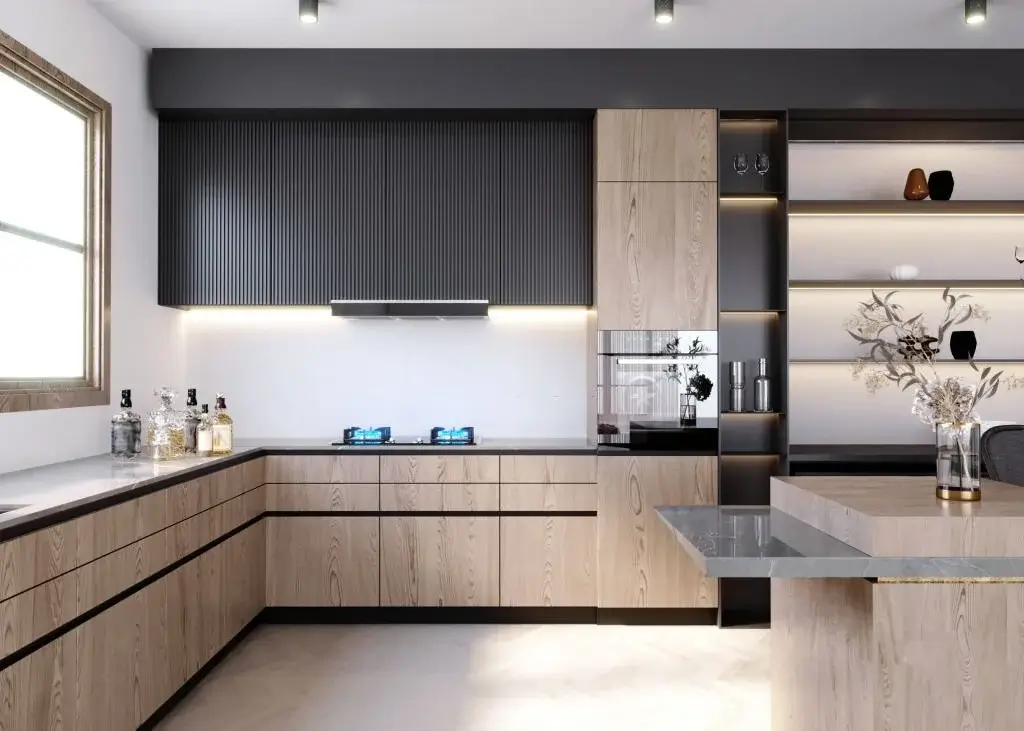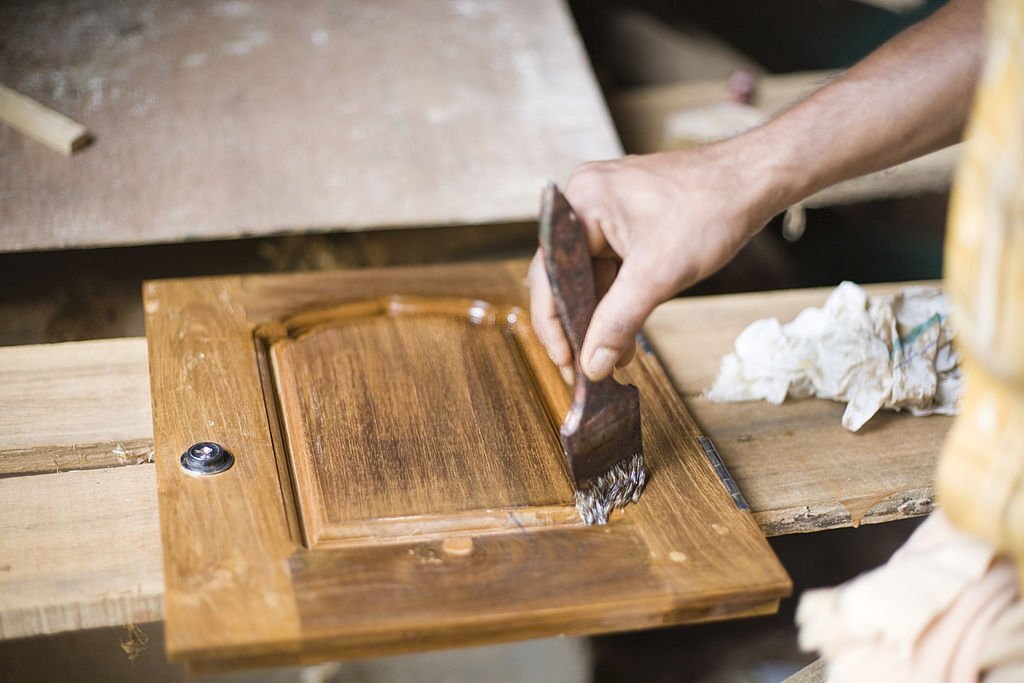
So what type of cabinets can you paint? You can paint various types of cabinets, including wood, MDF, laminate, veneer, and metal, with proper preparation and the right type of paint. Some materials may require extra care or specific techniques, but achieving a beautiful, updated look is possible with most cabinet materials.
Have you been staring at your kitchen cabinets, dreaming of a fresh new look, but unsure if they can even be painted?
Worry no more! As a pro painter, I’m here to help you navigate the world of cabinet painting and transform your space.
This beginner-friendly guide will answer all your questions and provide you with everything you need to know about painting different types of cabinets. So let’s dive in!
What Type of Cabinets Can You Paint? Exploring Materials and Their Suitability for Painting
Painting your cabinets can work wonders in transforming your kitchen or bathroom. But when it comes to cabinet materials, not all are created equal. Let’s take a closer look at the various types of cabinets and how suitable they are for painting.
Wood and MDF Cabinets: Your Go-to Option
When it comes to painting cabinets, wood and MDF are the most common and easiest to work with.
- Wood cabinets: Solid wood cabinets are a dream to paint, providing excellent adhesion and a fantastic finish.
- MDF cabinets: Made from medium-density fiberboard, these cabinets are also a great option for painting, offering a smooth surface and excellent durability.
Laminate Cabinets: A Little Extra Effort
Laminate cabinets, with their plastic outer layer, can be a bit trickier to paint, but with the right preparation and techniques, you’ll have no trouble achieving a beautiful finish.
- Cleaning: Start by thoroughly cleaning the surface to remove any grease or grime.
- Priming: Use a primer specifically designed for laminate surfaces to ensure proper paint adhesion.
Veneer Cabinets: The Wood Alternative
Veneer cabinets, made from a thin layer of wood glued to a particleboard or MDF core, can be painted with a bit of extra care.
- Surface prep: Make sure the veneer is securely attached to the core material and not peeling or damaged.
- Sanding: Lightly sand the surface to create a rough texture for better paint adhesion.
Metal Cabinets: Industrial Chic
Metal cabinets, whether steel or aluminum, can be painted with a little extra preparation.
- Rust removal: Use a wire brush or sandpaper to remove any rust or corrosion.
- Priming: Apply a metal primer to ensure proper adhesion and prevent future rust.
Choosing the Perfect Paint for Your Cabinets
Now that you know which cabinets can be painted, let’s talk paint!
Water-Based Paints: Quick and Clean
Water-based paints are popular for their easy clean-up, quick drying time, and low odor. They work well for most cabinet materials, especially laminate.
Oil-Based Paints: Smooth and Durable
Oil-based paints offer a highly durable and smooth finish, making them perfect for metal and wood cabinets. However, they do have a longer drying time and strong odor.
Hybrid Paints (Alkyd): The Best of Both Worlds
Hybrid paints combine the benefits of water- and oil-based paints, providing easy clean-up and a durable finish. They’re a great option for any cabinet material.
What Kitchen Cabinets Cannot Be Painted?
While many kitchen cabinets can be successfully painted with the proper preparation and technique, there are some materials and conditions that are less suitable for a paint makeover. In this section, we will discuss the types of kitchen cabinets that are more challenging to paint and the reasons why.
Thermofoil Cabinets: A Tricky Surface
Thermofoil cabinets are made from a thin layer of vinyl applied to MDF or particleboard. These cabinets are known for their smooth, glossy finish and can resemble painted wood. However, they present a challenge when it comes to painting.
- Heat sensitivity: Thermofoil is sensitive to heat, which can cause the material to warp or peel. Painting these cabinets with heat-generating appliances nearby may lead to damage or an uneven finish.
- Adhesion issues: Due to their smooth, non-porous surface, paint does not adhere well to thermofoil cabinets, resulting in poor durability and chipping.
High-Gloss Acrylic Cabinets: A Slippery Situation
High-gloss acrylic cabinets, known for their sleek and modern look, are also difficult to paint. The glossy surface makes it challenging for paint to adhere properly, and the end result may be uneven or easily chipped.
Conditions That Complicate Painting
Even if your cabinets are made from a paint-friendly material, certain conditions might make it difficult to achieve a professional finish.
Damaged or Peeling Cabinets
Cabinets that have experienced water damage, peeling paint, or deep scratches may require extensive repair before they can be painted. Depending on the extent of the damage, it might be more cost-effective to replace the cabinets rather than attempt to paint them.
Cabinets with Open Grain or Rough Texture
Some wood cabinets, such as oak, have an open grain or rough texture that can make it difficult to achieve a smooth, even finish when painting. While filling the grain with a wood filler can help, the process can be time-consuming and may not yield the desired results.
Intricate or Ornate Cabinets
Cabinets with intricate designs or ornate details can be challenging to paint, especially for DIY beginners. It’s difficult to achieve a uniform finish in areas with tight corners, grooves, and decorative elements.
While many kitchen cabinets can be painted with the right preparation and technique, thermofoil, high-gloss acrylic, and cabinets with damage or intricate designs may prove too challenging for a DIY project.
In these cases, it may be best to explore other options, such as refacing, replacing, or hiring a professional painter to ensure a high-quality result. Knowing your cabinets’ limitations will save you time, effort, and disappointment in the long run.
Taking the Plunge: DIY Cabinet Painting Tips
Feeling ready to tackle your cabinet painting project? Here are a few tips to set you on the path to success:
- Remove doors and hardware before painting.
- Label parts for easy reassembly.
- Test paint colors in a small, inconspicuous area.
- Allow ample drying time between coats.
Conclusion
In summary, understanding what type of cabinets can you paint is crucial for a successful cabinet makeover. Wood, MDF, laminate, veneer, and metal cabinets are generally suitable for painting, provided that you follow the necessary preparation steps and choose the right paint for the material. On the other hand, thermofoil, high-gloss acrylic cabinets, and cabinets with damage or intricate designs may pose challenges when painting, making it essential to consider alternative options like refacing, replacing, or hiring a professional.
By being aware of the limitations and possibilities when painting various cabinet materials, you can make informed decisions and transform your kitchen or bathroom cabinets with confidence.
Frequently Asked Questions
Q: Why is cabinet paint different?
A: Cabinet paint is formulated to be more durable and resistant to wear and tear compared to regular wall paint. Since cabinets are subjected to frequent use, grease, and moisture, cabinet paint is designed to provide a tougher, longer-lasting finish that can withstand these conditions while maintaining an attractive appearance.
Q: Do you need to use special paint for cabinets?
A: Yes, it is recommended to use paint specifically designed for cabinets to ensure the best results. Cabinet paint is more durable and adheres better to the surface, providing a smooth, long-lasting finish. Using regular wall paint on cabinets may lead to chipping, peeling, or an uneven appearance over time.



